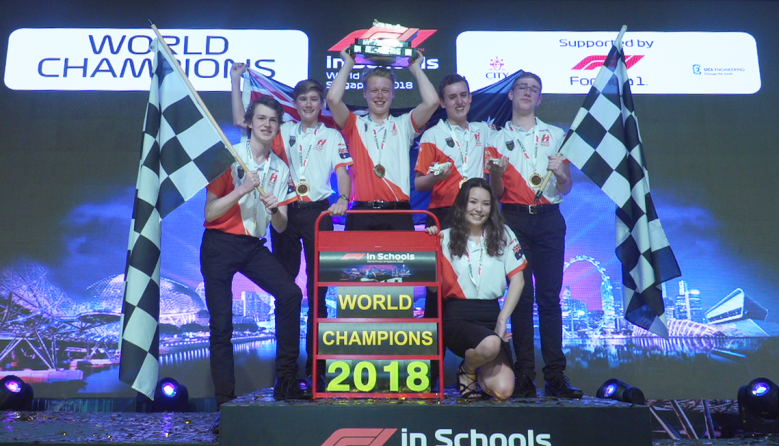
Visual Connections has teamed up with not for profit Re-Engineering Australia (REA) to endorse sign, graphics and print to students through competitions, with around 110 primary school students in Sydney to participate in its SPACE in Schools initiative this week.
SPACE in Schools will see students present their designs for biomedical laboratories on Mars, with presentations, a portfolio and trade display. The programme is serving as a pilot before it could potentially be executed nationally.
REA has also been busy promoting print in high schools, hosting the global F1 in Schools challenge, which requires students to create their own Formula 1 team to design, construct and race a miniature Formula 1 car, along with a display and portfolio.
The F1 contest saw around 60 students participate in the North Sydney regional final and about 150 students taking on the West Sydney round at Mt Druitt Tafe last week.
Peter Harper, general manager, Trade Shows, Visual Connections says, “We are finding the partnership with REA has its benefits, we have been doing it for more than 12 months now. We have been working to promote the graphic, sign, display and print industries.
“Where the F1 challenge targets students in years nine, ten and 11, SPACE is aimed at primary school students. It does promote STEM, but it also gives an idea of alternate careers, including those in print. Two of our members will be on the judging panel.
“The competition this Thursday is taking place in the Epping, Ryde and Eastwood area.”
Dr Michael Myers OAM, founder and chairman of REA says, “We are all about promoting science, engineering and technology to students, which embodies a lot of things. It requires signage, graphics and display. The students need to communicate their ideas and they need access to those industries.
“The SPACE in Schools competition is about getting kids to design environments for humans and introduce them early to virtual environments. It is being sponsored by Defence Australia and Visual Connections and there will be around 13 teams in the electorate.
[Related: Industry to promote print careers]
“It will involve a portfolio of their work, a display and virtual reality, where students will be able to step inside their design.
“Graphics runs through everything we do. Kids have to think about how their portfolios are being printed, they have to examine display and signs in their trade displays. These days you cannot do anything without being able to market it and you need print to market initiatives effectively.”
Australia topped the international F1 competition earlier this year, beating out other teams from around the world in Singapore.
Harper says, “In the F1 challenge, students have to create a portfolio of work, they have to design a logo and create a display showing their work, along with an oral presentation. I have judged at a couple of the challenges.”
“The point of the F1 challenge is to link schools with local print and design shops, who not only sponsor and help students in the contest, but they also mentor them. It is difficult to raise apprentice numbers when no one at the school knows about anything about print, the aim of it is to raise awareness about the industry. According to the surveys and feedback we are giving out in those arenas, we are doing that.”
Myers says, “There were around 400 schools involved in the world competition, and about nine million kids. Australia won the world title and now we are being swamped by schools wanting to get involved.
“Kids come out of school without ever experiencing the different careers or sectors that are possible for them and we are creating an environment for them to see it. They now can know how important sign, graphics and display industries are, by seeing and using the applications themselves.”
Visual Connections also welcomed 180 high school students at the Visual Impact show, where Tafe apprentices and industry experts ran a number of Try a Trade activities, including wrapping items and printing on T-shirts. They also took part in a speed career networking session with industry leaders and apprentices.
Harper says, “We use apprentices to talk to students, their role to raise awareness with students and we have an education liaison team they can talk to if they want to go further.”
Comment below to have your say on this story.
If you have a news story or tip-off, get in touch at editorial@sprinter.com.au.
Sign up to the Sprinter newsletter
